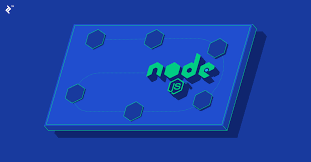What are the topmost NodeJS practices for developers?.
Node.js, a platform based on Chrome's JavaScript motor assists with growing quick, adaptable system applications. It utilizes an occasion driven,...


Tableau is the fastest growing data visualization tool that aims to help people see and understand data. In order to transform the way people use data to solve problems, tableau software ensures to meet strict requirements. In other words, it simply converts raw data into a very easily understandable format.
Data analysis is great, as it is a powerful visualization tool in the business intelligence industry. Data that is created using this software becomes so easy that it allows even a non-technical user to create a customized dashboard. It provides top class interactive data visualization with the purpose to help organizations solve their data problems.
Usually, the main function of the tableau is to gather and extract data that are stored in various places. It drags data from any platform imaginable. This dragged data can get extracted to the tableau data engine or desktop. Further, the data engineer works with this data and develops visualizations. This is where data is analyzed.
The created customized worksheets are shared with the users as the static file. These worksheets or dashboards are received by users who view this file using tableau reader. The tableau desktop data can be issued to the Tableau server. Tableau server allows its end users to have a better experience in acquiring the files from all locations, be it a desktop, mobile or tablet.
There are various consulting options and applications of the tableau. The compact placement completes the setup within no time as this software facilitates running start options. Tableau provides receptive business pricing with both clouds hosted editions and on-premise, paid annually. However, this module price depends on the number of users you involve. Let us look at different products of this software and its uses.
Tableau Desktop: With the help of tableau desktop anybody can create the reports and dashboards on the Tableau Server and work with by blending it into the system browser. Creating reports, charts and more is all done through tableau desktop. It allows you to connect with various types of data and converts it into simple understandable tableau reporting. Tableau dashboard and tableau data visualization can be accessed even through the mobile devices. The product of desktop product helps to create a great visualization, data stories, data analysis formation of workbooks etc.
Further, based on the connectivity to the data sources, tableau desktop is divided into two parts:
Tableau Public: This version of Tableau is particularly built for the cost-effective users. The workbooks created are not saved locally in this version. In fact, it is saved to the tableau’s public cloud which can be sighted and accessed easily by anyone. Anyone can download and access it effortlessly. Basically, there is nothing like privacy to these documents saved to the cloud. People who want to learn tableau and wish to share their information with the public can use this version.
Tableau Online: The administrator tableau server handles the access to servers provides permissions to the different data sources and protects data. The data is stored on servers hosted in the cloud which are maintained by the Tableau group. It also helps you manage security, team worker and execution of Tableau products. In other words, it allows you to publish Tableau Dashboards on the Tableau Online and share the data discoveries with anybody and can access and explore the various features like interactive visualizations, explore hidden opportunities and so on.
Tableau Server: The tableau server is use for sharing visualization created in desktop application across the organizations. In order to share dashboards on the server, it is required to publish work in the tableau desktop. It will only be accessible to the licensed users, once the work is uploaded to the server.
But, the licensed users are not necessarily required to have tableau server installed. All they need is to log in the permit that allows them to check reports through a web browser. The security system in this version is high; therefore, it makes it suitable for quick and effective sharing of data in an organization.
Tableau Reader: It is a free tool that allows editing and modifications of data created using Tableau Desktop or Tableau Public. You can easily view the workbooks and visualizations. But, the security level here is not the same as tableau online. The receiver should have tableau reader to view the document, in order to share the dashboards.
Today, Tableau has become the number one data visualization and business intelligence tool available in the market. It is used by maximum people to derive valuable insights from their data. The great advantage that tableau offers is that there is no need for the users to work with the powerful tool to have any sort of technical knowledge or programming skills. Last but not the least, Tableau is the best software tool as it allows users access to a reliable tech support team and automates data updates to help companies get fresh information without wasting their time.

Node.js, a platform based on Chrome's JavaScript motor assists with growing quick, adaptable system applications. It utilizes an occasion driven,...
What could be the ultimate goal for each business person? Increase the number of sales!!! In any case, driving traffic and offering amazing...